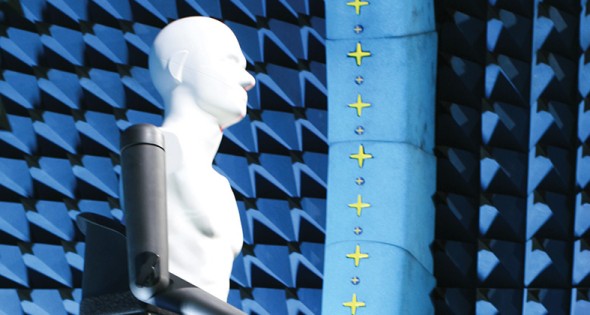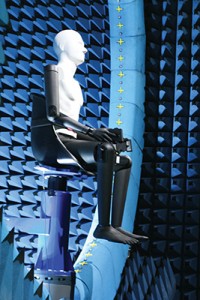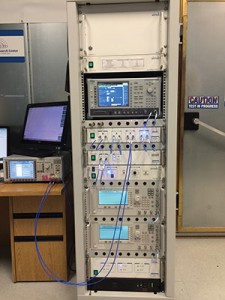
North Carolina: Incentives Create Economic Firepower
26 Jan, 2016
By David Hodes
More jobs, more industry. That’s the outcome of the economic development in North Carolina, fueled in part by both a reorganization of economic development, plus an incentive package shot in the arm.
Kim Genardo, director of strategic and economic communications for the North Carolina Department of Commerce, says that the commerce department is very pleased that the state assembly finally passed North Carolina Competes Jobs Plan bill, the governor’s incentive package that was signed into law on September 30.
The plan includes $20 million in annual job creation reimbursements that will give North Carolina economic development officials more flexibility and more firepower to attract new jobs to the state.
“We now have the most robust tools of incentives that we have ever had,” Genardo says. “And that has enabled us to continue our aggressive recruitment of new business and new corporate headquarters, along with business expansion.”
One investment she pointed to is Novo Nordisk Pharmaceutical Industries, Inc., an insulin and related diabetes treatment product manufacturer. The company will create approximately 700 jobs at a new biomanufacturing facility in Johnston County, and invest from $1.2 billion to $1.7 billion at its local site over the next five years.
It’s the largest single investment in the job development investment program in the state’s history, Genardo says.
Down to Business
Technology development thrives in the state. A business with North Carolina university research expenses for the taxable year is allowed a credit equal to 20 percent of those expenses.
She says that the state also continues to pursue developing the automotive and aviation sectors, which she says are very “robust and healthy.”
But economic developers in the state are not limiting themselves to those industries. “The favorite thing that the commerce secretary says is that if it’s legal, we want it,” Genardo says. “And he is not kidding.”
She says that a year ago, the state switched to a public private partnership called Economic Development Partnership of North Carolina (EDPNC). The EDPNC oversees the state’s efforts in business and job recruitment and retention, international trade and tourism, and film and sports development. “To me it’s still doing business as usual,” Genardo says. “We are still controlling the incentives on the state side. But a lot of developers are now working for this public private entity and are no longer working with the state.” She says that the partnership is still in its infancy, but the pace of development hasn’t slowed. “We are just on fire now,” she says.
Industries

In 2015, the IT’IS Foundation for Research on Information Technologies in Society of Zurich, Switzerland and the Wireless Research Center of North Carolina agree to partner on the development of performance testing procedures for a broad range of next generation on-body, wearable, and near-body wireless devices. Photo: Wireless Research Center of North Carolina
One of the companies that received North Carolina grants from the commerce department is GKN Sinter Metals, part of a global engineering company that does machining and component parts manufacturing for the automotive industry. GKN is expanding operations in Conover.
Their expansion project was made possible in part by a performance-based grant from the One North Carolina Fund. The fund provides financial assistance through local governments to attract business projects that will stimulate economic activity and create new jobs in the state.
Fidelity Investments, a financial services company located in the Research Triangle —situated between Raleigh, Durham and Chapel Hill — will add 600 jobs during three years and invest a minimum of $8 million across its Triangle facilities.
Ultra Electronics 3Phoenix Inc., based out of Chantilly, Virginia, with the majority of work being done in Wake Forest, was awarded a $24.8 million modification to a previously awarded contract for engineering services to develop a torpedo warning system. The system provides surface ships with the ability to detect threat torpedoes and employ defensive measures.
In Greensboro, Cyndi Dancy, vice president of business development services for the Greensboro Partnership Economic Development, says that Honda Aircraft Co., a division of American Honda, is in the process of building their enterprise in the area. They have a 680,000- square-foot, $160 million campus that is the site of their world headquarters, employing approximately 1,500. “They actually completed their campus this year,” Dancy says. “Now they have more engineers and designers and staff. They are a great success story for Greensboro.”
She says that the HondaJet, an advanced light business jet, is still in development and is on the verge of getting final FAA certification. “Once that hits, they will then need a little production time,” Dancy says. “Then we are really looking for the Tier I suppliers to come in.”
She says that they have other aviation companies in the area, such as Haeco Americas in Greensboro, a big maintenance, repair and overhaul facility, employing 1,800. “So there is a little bit of a supply chain already here,” she says. “But we do expect Honda to get into regular production cycles soon.”
Talent and Education
Workforce remains a huge push for the state, tapping into a deep well of qualified workers and drawing from vibrant research community represented by the Research Triangle and associated commercialization work there. “There is no region no matter where you live in the state where you are more than a 30-minute drive from a community college,” Genardo says. “So that community college system is a wonderful educational weapon for us to use.”
She says that the state is very focused on apprenticeships. For example, the NC Triangle Apprenticeship Program (NCTAP), based in the Triangle area, focuses on integrated basic training which develops technical, methodological and social skills. Starting in the 11th grade, this four-year program is divided into modules, with classes leading to an associate’s degree in mechanical engineering technology at Wake Technical Community College.
“We are looking at everything for workforce, from the high school kid to the community college to the university, because we know that we have to spit out enough engineers and IT specialists,” Genardo says, adding that much of the growth of companies recently is connected to building up their IT workforce.
Another education-based asset in the state is the Wireless Research Center of North Carolina, in Wake Forest, is a nonprofit wireless research hub offering help in the invention and development of wireless technologies with a unique combination of specialized testing facilities, engineering expertise, business incubation and intellectual property guidance for commercial, government and academic audiences. The center began offering engineering consultation and limited wireless testing in 2010. In 2014, the center began providing remote, in-field measurement capabilities.
In March, the Foundation for Research on Information Technologies in Society (IT’IS) of Zurich, Switzerland and the wireless center reached an agreement to address the need for the development of performance testing procedures for a broad range of next generation on-body, wearable, and near-body wireless devices for commercial, industrial and medical applications.
One such wearable wireless device would help keep people on task with programmed activity reminders, according to Jennifer Gaston, economic development coordinator for Wake Forest Economic Development. That device would be good for kids who have attention deficit disorder, she says. “That work on wearables has been drawing companies to the area to be near the center,” Gaston says. “There is nothing like this in the whole country.”

In 2013, the Golden LEAF Foundation awarded a $750,000 grant to the Wireless Research Center of North Carolina to establish Portable Wireless Network Test Capability in North Carolina. Photo: Wireless Research Center of North Carolina
High-tech devices and discoveries are becoming more of the DNA of the state, and academia has answered the demand beyond just the Research Triangle.
For example, in Greensboro, there is a 105,000-square-foot Joint School of Nanoscience and Nanoengineering (JSNN). The JSNN is a partnership between two state universities, the University of North Carolina at Greensboro, and North Carolina A&T State University, housed at the Gateway University Research Park.
The joint school offer a master’s degree in nanoscience and nanoengineering, which has applications in manufacturing and life sciences.
Assets
Dancy says that they are on the way to finishing their roadwork on the urban loop in Greensboro, with two portions of the roadway under construction. The last portion is scheduled for completion in 2020. “That will pretty much connect most areas of the city,” she says.
She says that, at the airport, construction on Interstate 73 continues (it’s a major north-south route through the state that began construction in 1997). A bridge taxiway over the interstate is under construction, which will give better access to the airport and enable additional aerospace manufacturers to come in. The taxiway bridge will spur development by providing runway access to approximately 400 acres of developable land.
In Franklin County, which includes the Research Triangle, Ronnie Goswick, director of the Franklin County Economic Development Commission, says that they are in the process of locating several clients into the 252-acre, recently certified Triangle North Franklin Industrial Park that is adjacent to the Triangle North Executive Airport. That is one of five industrial parks in the area. “Most of our growth comes from existing industry,” Goswick says.
The industrial park has two large buildings: one at 100,000 square feet, the second at 33,900 square foot. “We are basically looking for someone to come in and purchase that building,” he says. There are two clients looking to move in now, he says, including an aircraft parts manufacturer and a chemical manufacturer.
Lifestyle
Richie Duncan, existing industry coordinator for the Franklin County Economic Development Commission, says that there is a very active equine community there. “There are a lot of trail rides, horse farms and just absolutely gorgeous places for people in the equine community,” she says.
Duncan says that they are also promoting small bed and breakfast farms, which are active farms where visitors can stay that have become popular in the area. Agrotourism is also a growing niche in the county, where visitors will enjoy things like gemstone mining, hay rides and picking strawberries, she says.
The busy economic developments of the state contrasts nicely with the laid-back amenities of living in the state. But there is more work to do. Genardo says that they will always support their automotive, aviation and life sciences sectors. But they are growing other sectors as well. “One new thing is that we have a food manufacturing task force,” she says. “So now we are not just talking about automotive and aviation and life sciences. Now we are talking agriculture,” she says. “We are never going to forget our roots in the agriculture economy. Now we are talking food processing and food manufacturing, and that is new territory.”
More Info










